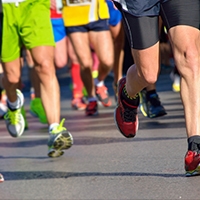
Over 50,000 people will run in the 2017 New York City Marathon in just under a month. If you’re training for the race, here’s what you need to know about injury prevention and treatment.
Pre-Race Orthopaedic Appointments in New York
Before the race, you want to make sure your body is in top condition. That means getting enough sleep, hydrating, avoiding intense or risky gym workouts, starting to alter your diet, and treating any problems or injuries you have.
Preventing Injuries
Recovery is an important part of training for a marathon, so be sure to stretch lightly before and after runs, and take a day off to let your body heal after long runs. If you have an injury from the past, a brace or tape can help prevent re-injuring yourself.
Treating Injuries Before the Race
If you do sustain an injury while training, it’s important to allow these injuries to heal so that you don’t cause further damage. If you’re suffering from foot or ankle pain, start with at home treatment using the RICE method- rest, ice, compression, and elevation.
If swelling or pain continues, schedule an appointment quickly to get treated well before race day.

Common Race Injuries
Even the most experienced and prepared runners can injure themselves during the race. If you experience pain, swelling, or stiffness, schedule an appointment to see our orthopedic doctors in Upstate New York. Here are the most common race injuries we see, and what symptoms to look out for:
Stress Fractures
Stress fractures are small cracks in the bone that are common in the tibia (shin bone) and metatarsals (bones in the feet). It is caused by too much repetitive stress on the bone. You may notice pain that is similar to shin splints, but more noticeable and focused on a smaller area of the bone. In order to heal completely, you’ll need to stop running for four to six weeks, and you may need additional treatment.
Hamstring Injuries
Pain in your hamstrings can mean a pulled muscle or an overuse injury. If you experienced a sharp, sudden pain, or bruising, stop running and seek treatment. If you have tightness, you may need to take or break or do slower runs without any hills.
Bursitis
Bursitis can occur in the arm, elbow, hip, joints, knee, or shoulder, and results in inflammation in fluid-filled pads near the joints. It’s a common injury of the knee for runners and can be treated with rest, ice, and anti-inflammatory medicine. Further treatment may be needed including draining the fluid, steroid injections, or physical therapy.
Treat your injury as soon as possible by scheduling an appointment with OrthoNY today!
